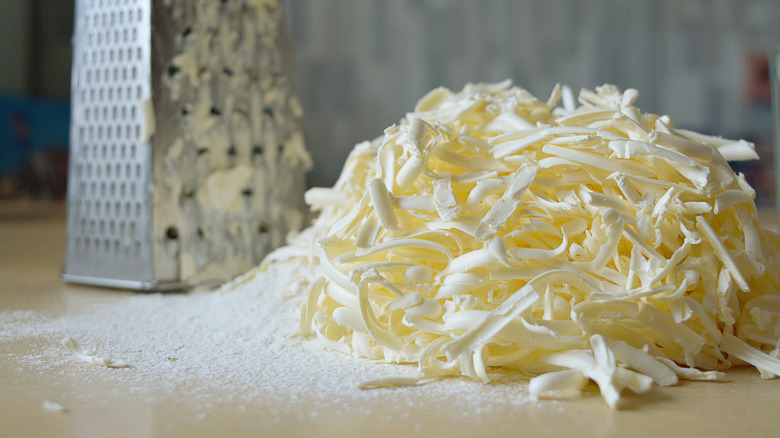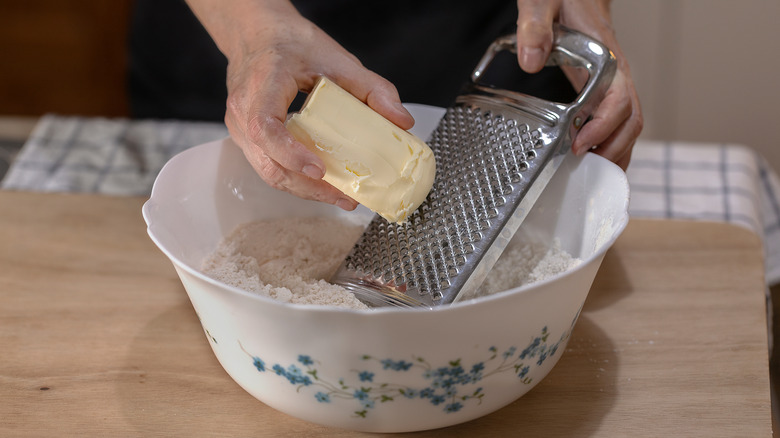You Probably Never Thought To Grate Your Butter
Ah, good ol' butter. Right up there with other cooking staples such as olive oil, all-purpose flour, granulated sugar, and eggs. This creamy fat is a must in any kitchen, bringing flavor and texture to a myriad of dishes including roasted vegetables, soft polenta, fried pierogies, and of course a world of baked goods including layer cakes, croissants, and pie crust. There are so many ways to cook and bake with butter that it's hard to keep track.
Melt some down and toss it with any veggies you want to roast? Check. Soften it and whip it with sugar as the base of many types of cakes, quick breads, and muffins? That too. To make the flaky pastry used for croissants and apple turnovers, whole slabs of cold butter are rolled into layers of dough, repeating the process until thin layers of butter run between many strata of dough. As it turns out, there's yet another great way to incorporate butter into your baking, and that's by grating it first.
Grated butter is an ideal choice for baked goods
Due to its high fat content, butter freezes exceptionally well, making it easy to stock up and toss a stick or six into the freezer. Sometimes, though, dealing with frozen butter feels like a hassle, as many recipes call for it to be softened or melted before use. But did you know that you can often skip these steps and bake directly with frozen butter simply by grating it first?
According to the Kitchn, super-cold butter is used in many pastries, such as in pie crust and biscuits, in which the recipe depends on cold butter to release puffs of steam that create layered, flaky desserts. In these recipes, you can simply refer to the amount of butter needed, measure it out from the frozen stick, grate the butter, and proceed.
If you're following a recipe for baking that does call for softened butter, grating it from the frozen stick will speed up that process. Again, just measure out the amount of butter you'll need, grate the frozen stick, and let it sit in a bowl or on a cutting board. In just a few minutes, due to air exposure on all sides of the small flakes of fat, the butter will soften up nicely and you'll be able to get baking. So, the next time the baking urge strikes and the only butter you have is frozen solid, bust out your box grater and speed things along.

